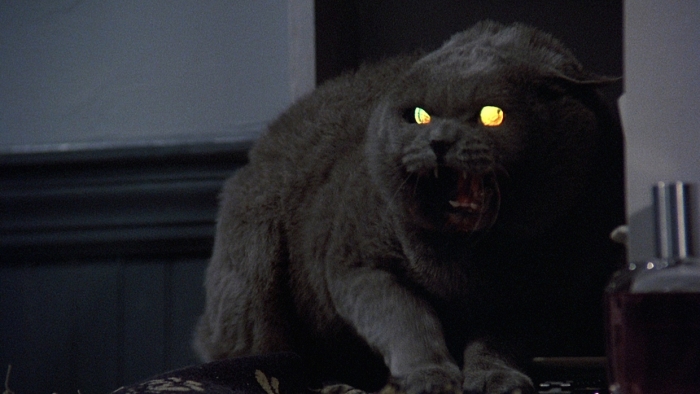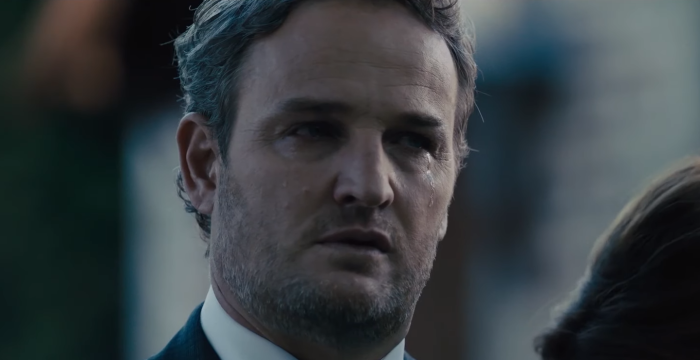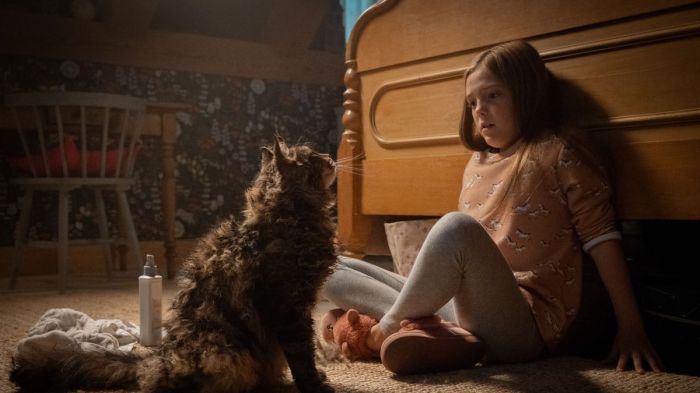Before you ask: no, unfortunately I’m not here to talk about how great Jerry Stiller is and how Frank Costanza’s game-changing philosophy is what we need more than ever right now. The good news, though, is that I’m actually reviewing a movie this week, albeit not a current one – in fact, Serenity was released in theaters during the post-holiday doldrums of the cinematic trade, garnering poor reviews and failing entirely to recoup its modest $25 million budget. Be it due to the siren song of Matthew McConaughey, who is relatively high on my list of current actors who I enjoy/are also capable of great things, or be it due to the pretty enticing trailer, I was definitely interested in spite of the poor reviews, so way back in February I actually went to the AMC to see it. However, there was a projector issue (what we were told was that one of the motherboards wound up completely fried), so I got a pass for a free movie and never wound up seeing Serenity – that is, until this past weekend. What I know now is that the February incident was the cosmos’ way of telling me to never, ever, see this slipshod mistake of a movie, and gosh should I have listened.

Anne Hathaway trying to give Matthew McConaughey bedroom eyes when he isn’t even looking at her sums up this movie pretty well.
I’m willing to spoil Serenity’s twist here with little fanfare or warning, simply in hopes that if the twist is ruined for you, the reader, you may avoid the same error I made by seeing it and wasting almost two hours. The long and short of it is that Matthew McConaughey is actually dead (not altogether unsurprising, as twists go) and this version of himself is living within a video game of his son’s design, and living with a different name, knowledge of his past, but no real knowledge of how he got to the island the game takes place on (altogether surprising, as twists go). As a narrative element, it has juice for sure, but it’s telegraphed hard from the word go (and not in an effective way like in The Truman Show, where all is laid bare almost immediately and there’s no real “twist” to be had), and the twist itself is, well, twisted at what feels like a really inopportune time (right about at the middle of Act II, which is a baffling choice). It’s also a twist that begs some unfortunate questions, such as “why is a teenaged kid creating a video game in which his late father – a man who he purportedly admires/looks up to – repeatedly has meaningless sex with a woman who isn’t his mother?”

Diane Lane‘s character giving Matt’s character money for I think finding her cat? Or the sex they just had? It’s kind of unclear.
What Serenity seems to be going for is film noir meets The Truman Show (one of my favorite films), which honestly sounds like a fabulous concept for a movie, making its failure to deliver on that initial promise all the more frustrating. The noir parts are halfway convincing, with McConaughey showing flashes of troubled Bogart-ism when he’s not going all-out insane, but the film is also drenched in symbolism that in quite a few ways remain unexplained (what’s the deal with Walter, that old guy at the bar? He seems important in some way, at least to the writers), and also contains a lot of after-school-special elements about domestic violence that I’m more than willing to hear out but also come off as preachy and foamcore when they’re driven by such a black-and-white cartoon-bad-guy abuser as Jason Clarke‘s character (seriously, I’m sure there are some, but most abusers aren’t such clear-cut assholes). The result is a movie that could have been so much better than it was, if only by committing to one of its prosperous narrative avenues instead of trying to shoot the moon and combine them – instead we get an end product that’s as good as none of them, and certainly not as good as the hard-to-achieve symbiosis of them. The phrase “jack of all trades, master of none” comes to mind more than anything, but I’m also not sure that Serenity is the proverbial jack of anything.

Jason Clarke’s shooting script was one page long and just said “be a huge dick while holding and/or paying people a lot of money.”
But Serenity isn’t completely unentertaining, especially if you’re the kind of person who enjoys watching so-bad-they’re-good movies – this film definitely lies in that territory based largely on an over-the-top but no doubt beyond compelling performance from McConaughey that I daresay has shades of Cage at times. The writing does him no favors whatsoever – nor any of the rest of the cast – and for the most part is laughably bad, but it also gives us an opportunity to watch a man collapse in on himself when in fact he starts the film by madly brandishing a knife at two largely-innocent men who just want to have the good time on a fishing boat that they paid for. It’s for this reason, along with the fact that Serenity seems to be mostly focused on the life and characters within its bottled-up island community (some characters who simply aren’t explored enough), that I think the concept may have played at least slightly better as a television show; seeing Baker Dill’s precipitous fall from an initially non-existent grace probably would have been at least a little more enticing if it hadn’t been crammed unceremoniously into less than two hours worth of film.

Probably Serenity’s most compelling character, and therefore the one with the least amount of screentime. Makes sense.
Serenity is a movie that certainly shouldn’t ever be paid for, and luckily I didn’t really pay for it either time I tried to watch it (it can be streamed on Amazon Prime, which is how I watched last weekend, and when I attempted to see it at the theater I was an A-list member). This is the true joy of A-list: the ability to see movies of questionable quality with markedly less financial guilt. It’s with this in mind, and with a heavy heart, that I report that I’ll be ending my tenure with A-list, at least for the next six months (that’s their minimum refractory period after cancelling, supposedly to curtail any on-again-off-again subscription patterns, which likely lose them money). They’re about to raise their prices, and as I’ve mentioned in previous posts, my typically theater day (Sunday) is now being enveloped by sports. Thus, as we look into the ever-hazy future of Tuesdays with Cory, I’d say you should expect more reviews like this: namely reviews of streaming content ranging from buzzy to Serenity, with the occasional current film thrown in as the ol’ wallet allows.




